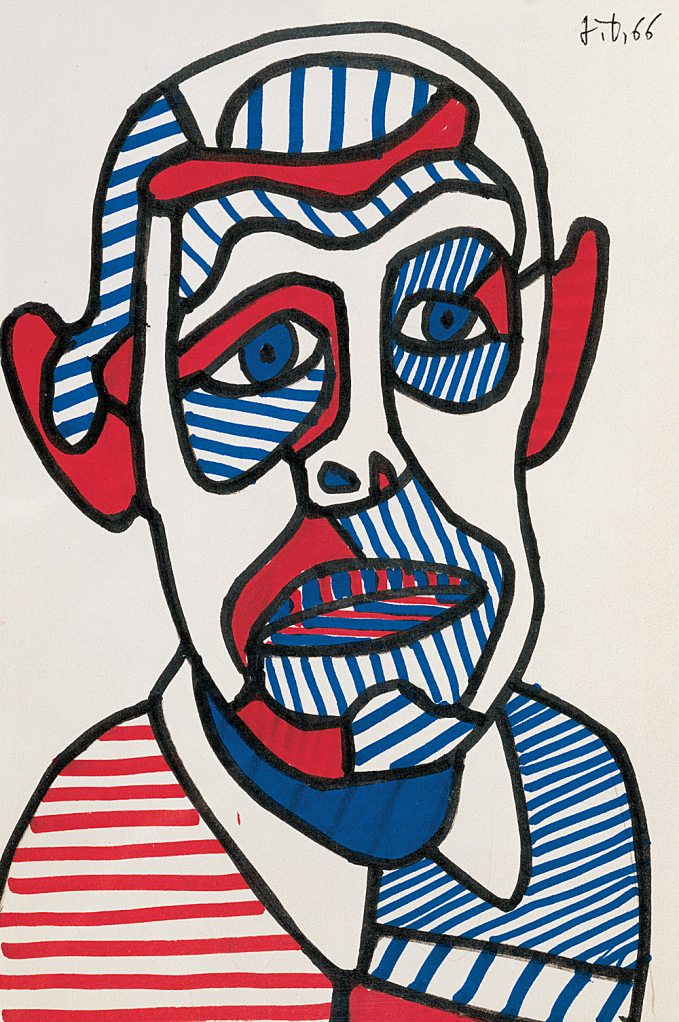Jean Dubuffet: Trace of an Adventure
11.08.2003 - 04.18.2004
With the presentation of this extensive selection of works by Jean Dubuffet, the Guggenheim Museum Bilbao continues to pursue its aim of showing, in chronological order, its collections of twentieth-century art belonging to its Permanent Collection. This historical overview began in 2001 with the Selections from the Thannhauser Collection, which contained masterpieces of impressionism, post-impressionism and the first avant-garde movements. In 2002, the overview continued with an exhaustive look at the work of one of the pioneers of abstract art with the presentation Kandinsky in Context. In 2003 Jean Dubuffet will continue this historical review with the presentation of an extensive selection of the work of this French artist, one of the maximum exponents of Informalism, a movement that came into being in Europe after the World War II.
Born in 1901 in Le Havre, France, Dubuffet studied art in Paris for a short time during his adolescence, where he met Raoul Dufy, Max Jacob, Fernand Léger, and Suzanne Valadon and where he was fascinated by a book by Hans Prinzhorn on the art of the mentally handicapped. After traveling through Italy and South America, first he worked as an industrial draughtsman and later in the family business during which time he abandoned the world of art.
It was not until 1942 when Dubuffet decided to dedicate himself to artistic creation. At the beginning of this decade he joined André Breton, Georges Limbour, Jean Paulhan, and Charles Ratton. During this period, his style and subject matter were profoundly influenced by the work of Paul Klee. From 1945 onwards, he began to collect Art Brut, the spontaneous works of self-taught artists, who in some cases were mental patients.
Dubuffet himself categorized his pictorial style as Art Brut, contrary to everything that might be expected of a painter in the French artistic tradition, and proposed a radical challenge to established aesthetic values. Inspired by graffiti and the spontaneous art of self-taught artists, Dubuffet insisted that his work questioned the deceitful notion of beauty "inherited from the Greeks and promoted by magazine covers." In addition to his devotion of the art of "primitive" cultures and of untrained artists, Dubuffet was also enormously interested in a wide range of fond objects and materials. In his attempt to restore the values and materials scorned by Western aesthetic conceptions, what interested Dubuffet most was unleashed, spontaneous and sincere energy and with it, the spirit of insubordination and defiance.
Jean Dubuffet
Autoportrait II, 1966
Marker on paper
25 x 16,5 cm
Collection Fondation Dubuffet, Paris

